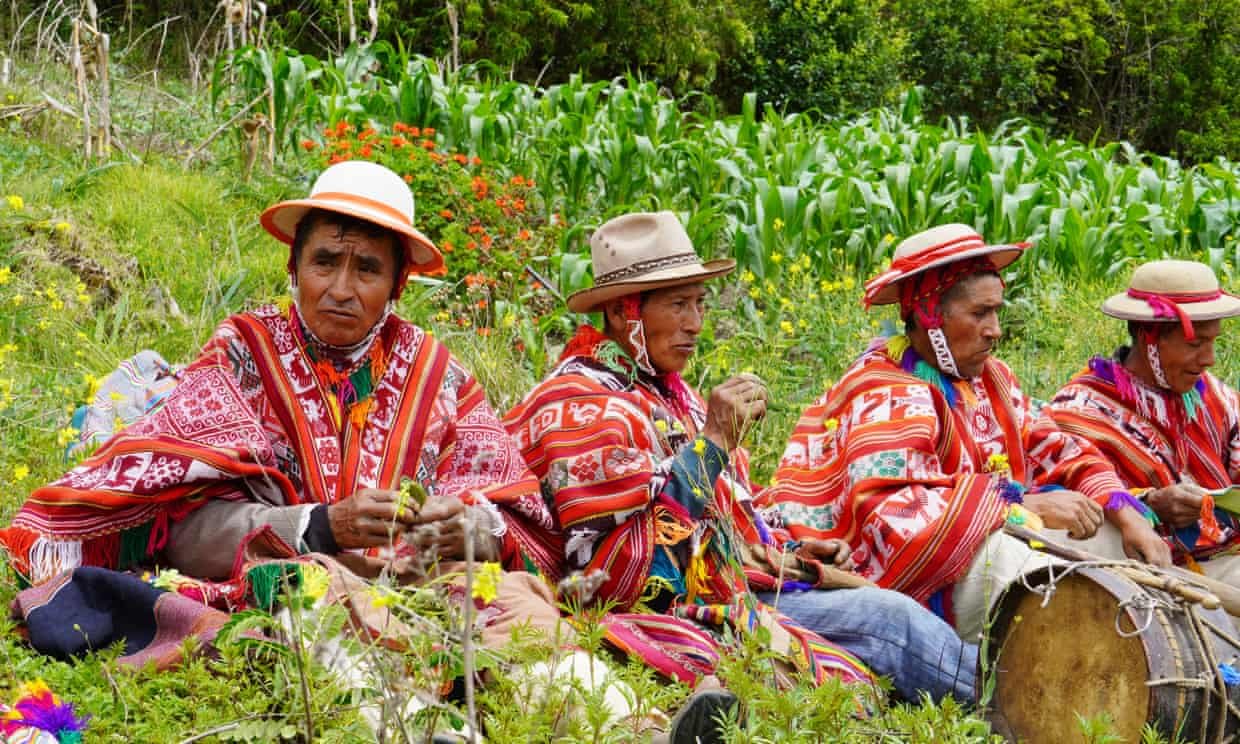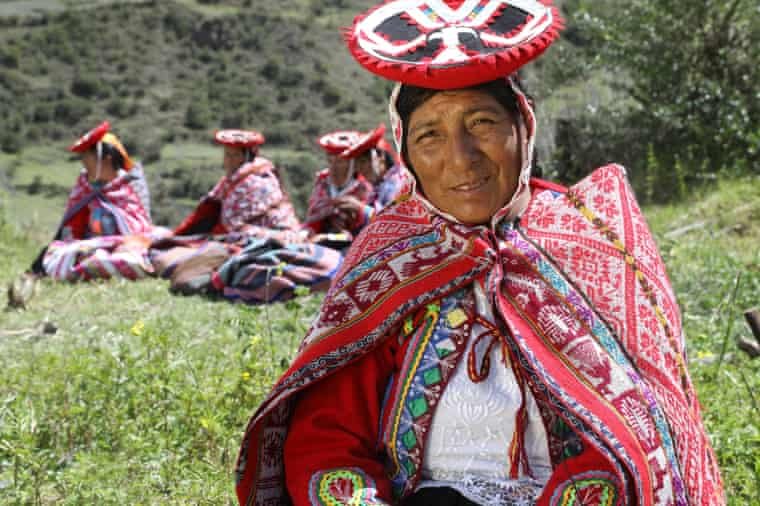Jan 25, 2022
Can Ancient Methods Future-Proof Food Security In The Andes?

Men in Ccachin, a village near Cusco, Peru, meet to drink chicha, made from fermented maize, before working in the fields. Photograph: Dan Collyns/The Guardian
Editor’s Note: Long before the climate crisis, these farmers’ ancestors adapted to growing crops in different niche ecosystems. We must bring this ancestral agricultural knowledge to modern-day agricultural practices to help us strengthen the global food system. Such work could help us further sustainability in agricultural practices, ensuring food security for a larger population.
CONTENT SOURCED FROM THE GUARDIAN
In Peru’s remote villages, farmers have used diverse crops to survive unpredictable weather for millennia. Now they are using this knowledge to adapt to the climate crisis.
In a pastoral scene that has changed little in centuries, farmers wearing red woollen ponchos gather on a December morning in a semicircle to drink chicha, made from fermented maize, and mutter an invocation to Pachamama – Mother Earth – before sprinkling the dregs on the Andean soil.
Singing in Quechua, the language spread along the vast length of the Andes by the Incas, they hill the soil around plants in the numerous small plots terraced into a patchwork up and down the Peruvian mountainside.
The Andes sustains one of the most diverse food systems in the world. Through specially adapted farming techniques, these farmers conserve a great variety of maize, also known as corn, and other biodiverse crops that could be key to food security as global heating causes a more erratic climate. Maize has been grown in Lares, near Cusco, for thousands of years, in one of the highest farming systems in the world. Choquecancha and Ccachin communities specialise in more than 50 varieties of the cereal in a myriad of different sizes and colours.

‘With the pandemic the people don’t want to barter, they want money,’ says Genara Cárdenas, a farmer in Ccachin, Cusco. Photograph: Jorge De La Quintana
“In the old days, the Incas grew these ecotypes and now we continue the path set down by our ancestors,” says Juan Huillca, a conservationist in Choquecancha, a tiny mountainside village.
On a blanket are ears of corn ranging in colour from faintly yellowed white to deep purple. All have thick kernels and evocative names. Yellowish corncobs with red tinted kernels are called yawar waqaq (blood crier). White cobs flecked with grey, whose toasted kernels are served as crunchy canchita with Peru’s flagship dish ceviche, are more prosaically called chuspi sara (small corn).
Historians believe what is now the world’s most widely grown cereal crop was first domesticated by people in modern-day Mexico about 10,000 years ago and subsequently spread south down the spine of the Andes to reach Peru about 6,000 years ago.
Long before the climate crisis, these farmers’ ancestors adapted to growing crops in different niche ecosystems, from icy mountain peaks to sunny valleys.
“In this landscape it would be difficult to produce just one variety of one crop, because in one year you can have frosts, hail, droughts or torrential rain,” says Javier Llacsa Tacuri, an agrobiodiversity expert who manages a project to safeguard the farming techniques, which have been identified as one of a handful of globally important agricultural heritage systems.
“With a few varieties, you could not face a farming year, so the response is to have many varieties. The frosts and hailstorms have always occurred and their ancestors knew how to face them,” he says.

Maize is collected and stored in a seed bank in Ccachin to prevent varieties being lost. Photograph: Dan Collyns/The Guardian
With more than 180 native domesticated plant species and hundreds of varieties, Peru has one of the world’s richest diversity of crops.
Backed by the UN’s Food and Agriculture Organization, the project supports the farmers to preserve the native species, and Llacsa Tacuri and colleagues help find markets for the multicoloured corns.
“Peru is one of eight places in the world which is considered a centre of origin for agriculture,” says Llacsa Tacuri. “The first inhabitants and their descendants – the peasant farmers who are here – started their adaptation to this landscape more than 10,000 years ago.”
Huillca says his village and its neighbours are already feeling the climate crisis.
“Diseases like stem rust or blight arrive, sometimes we get frost or hail. That’s why we have our seed bank in order not to lose our maize ecotypes, so we can recover what we’ve lost and resow those varieties,” he says.


